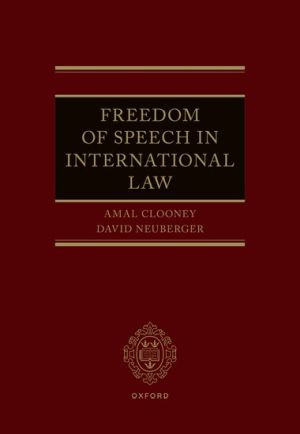
Freedom of Speech in International Law charts the minimum protections for speech enshrined in international human rights law. It clarifies what the right to freedom of expression means under international law, identifies conflicts between law and state practice, and provides key recommendations as to how international standards should be interpreted, updated, and enforced.
Each of the book's six chapters focusses on an area of the law that is being weaponized to silence the press or curtail freedom of expression. Chapters focus on insulting speech (including defamation and sedition laws), false speech (through misinformation or disinformation laws), hate speech, and speech affecting national security (in form of espionage/official secrets laws and terrorism laws). Each chapter outlines relevant state practice, identifies the conflicts that exist in international human rights law, and highlights areas for reform. Examples throughout the book demonstrate the legislative tools relied on by states to quash dissent - not just sedition, treason, and criminal insult laws that have traditionally targeted speech but, increasingly, terrorism, 'false news', and other vague laws to protect themselves against unflattering press. Recommendations at the end of each chapter aim to bridge the gap between practice and the legal obligations of both states and social media companies that have expressed voluntary adherence to the same standards.
These recommendations build on existing standards, are informed by an esteemed group of experts from across the world, and have been endorsed by the Media Freedom Coalition's High Level Panel of Legal Experts on Media Freedom.